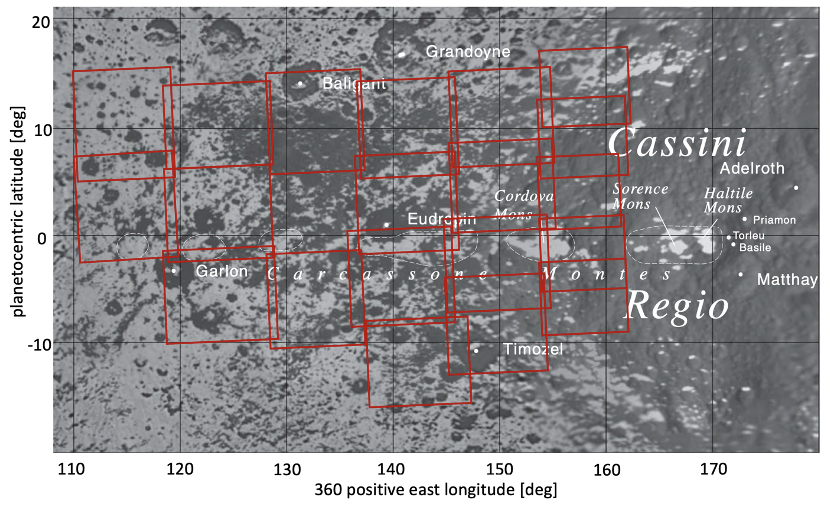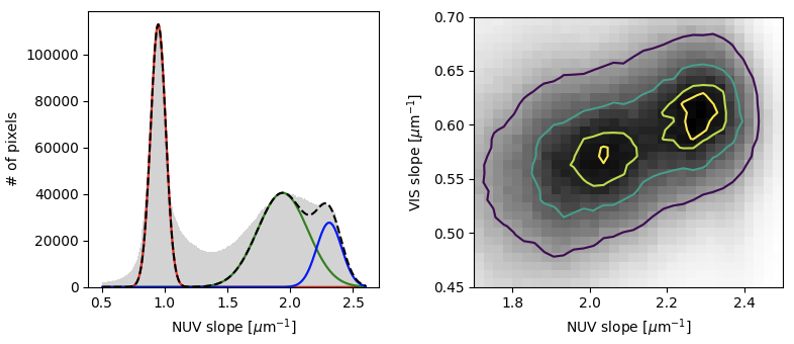- 1Instituto de Astrofisica de Canarias, Spain (ftinaut@iac.es)
- 2Universidad de La Laguna, Spain
- 3Instituto de Astrofísica de Andalucía, Spain
- 4Institute of Space and Astronautical Science (ISAS), Japan Aerospace Exploration Agency (JAXA), Japan
- 5Florida Space Institute, University of Central Florida, Orland, FL, USA
- 6Planetary Science Institute (PSI), Tucson, AZ, USA
Giant planets have numerous moons with various origins and evolutionary paths. During their formation, they had disks of material, whereas regular satellites formed similarly to planetesimals in the solar disk. During their migration, they also captured objects in their orbits, known as irregular satellites. Iapetus is Saturn’s third largest and second oldest regular satellite, with only Phoebe being older (Bottke et al., 2024). It is tidally locked and embedded in Phoebe’s ring. Its orbit and tidal location suggest significant impacts during its formation (Bottke et al., 2024). Iapetus has intrigued researchers for decades due to its extreme albedo bimodality, with one hemisphere very dark (2-6%) and the other much brighter (50-60%). The dark material’s origin has been debated: Cook & Franklin (1970) suggested an exogenic origin, while Smith et al. (1981, 1982) proposed geological activity. Burns et al. (1979), Porco et al. (2005), and Filacchione et al. (2010) supported the exogenic hypothesis, naming Phoebe as the source. However, spectral analyses by Cruikshank et al. (1983) and others found discrepancies between Iapetus and Phoebe’s spectra. Le Gall et al. (2019) stated the dark contaminant must be present at certain depths, as observed by Arecibo radar. Other potential sources include debris from regular moons or impacts from irregular satellites (Thomas & Veverka, 1985; McDonald et al., 1994; Owen et al., 2001; Buratti et al., 2005b). The nature of the dark material remains uncertain. Our work aims to explore NUV data from the Cassini-Huygens spacecraft to gain new insights into Iapetus’ dark terrain.
We used high spatial resolution images and Visual to IR spectra of the surface of Iapetus, a moon of Saturn, observed by the NASA-ESA Cassini-Huygens spacecraft (Cassini spacecraft, hereafter). This mission, launched in 1997, was conceived to study the planet Saturn, its rings, and its family of icy moons. The spacecraft orbited Saturn between 2004 and 2017, and in September of that year, it plunged into the planet’s atmosphere in what was called "the Grand Finale." We used the Imaging Science Subsystem (ISS), composed of two CCDs with different fields of view. The Narrow-Angle Camera (NAC) had 24 filters mounted in a wheel, allowing it to take images in multiple wavelengths between 0.2 to 1.1 μm. In 2007 this spacecraft made the closest flybys over Iapetus, taking high spatial resolution images in 4 filters between 0.34 and 0.75 μm during each pass, covering 50 deg in longitude and 30 deg in latitude with a resolution of a hundred meters. We also used the Visible and Infrared Mapping Spectrometer (VIMS) which covered from 0.35 to 5.1 μm. This instrument allowed us to study the 3μm absorption band but with a spatial resolution of several kilometers per pixel. Both instruments observed the same region allowing us to compare the reflectance in both wavelength ranges.
Preliminary analysis of different regions on the Iapetus surface made us focus on the transition region between the icy and the dark faces, as there was local variability in the NUV reflectance of the primitive material. Thus, we decided to use the highest spatial resolution images in different filters along this region, see its footprint in Fig. 1.

- Figure 1– ISS footprints of the final regions analyzed in this work. It is important to notice that the images were taken in the transition region between the icy trailing face and the dark leading face.
From the analysis of the distribution of the NUV slope values in the transition region between the ice and dark hemispheres of Iapetus, we obtained three different populations on its surface: the ice (red curve on Fig. 2), and two different populations of dark material (green and blue curves on Fig. 2). We showed an agreement in the NUV slope of one of the found populations with the lithosphere of Iapetus. The other population is located in the leading face of the moon and is assumed to have an exogenous origin (e.g., Porco et al., 2005). Using the NUV slope of high spatial resolution we were able to infer the IR spectra for the unresolved lithospheric material at each VIMS pixel. We compare the IR spectra between the lithospheric and the exogenous material trying to infer different compositions.

- Figure 2 – Left panel: Histogram of computed NUV slope values for the transition region shown in Fig. 1 (red squares). We added a dashed black curve and its individual components in solid red, green and blue lines, associated with ice, and two dark components respectively. Right panel: Density plot of the visible versus NUV spectral slopes centered on the values of the dark material. Isolines at 50, 75, 90 and 95 % of the maxima are shown in purple, blue, green, and yellow, respectively, clearly showing two populations
Furthermore, we found a correlation between the UV and the 3 μm absorptions in the exogenous material, similar to the one we detected in Tatsumi et al. (2023) for primitive asteroids. (see Fig. 3).
- Figure 3– Density plot of IR slope (between 3.3 and 3.7 μm) from VIMS spectra versus UV slope from ISS photometry. Both are proxies of the respective band depths.
Finally, we found a systematic deeper UV absorption in the interior of the craters than in their surroundings. As craters’ interiors are fresher than their surroundings this result points to an observational proof of space weathering shallowing the UV absorption band, as proposed by Hendrix & Vilas (2019). However, an age estimation of the surface is needed to make this conclusion stronger.
How to cite: Tinaut-Ruano, F., de Leon, J. M., Rizos, J. L., Tatsumi, E., Pinilla-Alonso, N., Vilas, F., and Hendrix, A.: The Iapetus’ case: NUV as tracer of two populations of dark material, Europlanet Science Congress 2024, Berlin, Germany, 8–13 Sep 2024, EPSC2024-1071, https://doi.org/10.5194/epsc2024-1071, 2024.